These Terms of Reference do not supersede the Bylaws of the BC Association for Crane Safety (the “Association”) also known as BC Crane Safety. They are presented here to provide a general summary of the composition, responsibilities and activities of the BC Crane Safety Board of Directors (the “Board”).
Purpose of the Board
BC Crane Safety understands the importance of impartiality and objectivity in carrying out its certification activities as well as effectively managing conflict of interest. The Board is in place to uphold the mandate, vision, mission and organizational objectives of the Association.
The vision of BC Crane Safety is:
Safe and effective crane, hoisting and rigging operations throughout British Columbia
The mission of BC Crane Safety is:
To engage with our stakeholders concerned with cranes, hoists and rigging, including employers & workers, across multiple sectors to support safe crane and hoisting operations in British Columbia.
The mandate of BC Crane Safety is:
- Maintain the integrity, validity and reliability of crane operator certification and licensing within British Columbia.
- Collaborate with industry and other stakeholders to identify and promote industry practices that support safe and effective crane and hoisting operations in BC.
- Advocate for standards, policies and regulations that support safe and effective crane operations in BC through stakeholder engagement and advisory groups.
Organizational objectives include:
- Promoting accident-free crane operations throughout British Columbia.
- Maintaining in British Columbia a cost-effective crane operator qualification regime that:
- Involves documented proof of competency
- Includes theoretical and practical assessments
- Is accessible and available at all levels of the industry.
- Promoting the attractiveness of the industry to prospective entry-level crane operators and the timely achievement of their qualifications.
- Serving as an industry advisory body to agencies in a position to oversee qualifications and standards.
- Serving as an advisory body to the Workers’ Compensation Board of British Columbia (WorkSafeBC) regarding regulatory matters and other matters related to occupational health and safety as they impact the crane industry.
Duties and functions of the Board
The Board acts as the responsible stewards of the Association’s resources.
The Board meets regularly to review the operations, accountability and management of the Association’s services, projects and staff.
The Board of Directors regularly reviews reports pertaining to the Association’s operations, including:
- Financial Reports
- Executive Director Reports
- Certification Services Reports
- Project Progress Reports
Constituency and composition of the BC Crane Safety Board of Directors
The Board consists of nine voting members and five non-voting members.
Board members are selected representatives from employers, contractors and companies that work in, or directly support, crane operations. Every effort is made to appropriately represent provincial regions and industry sectors. One non-voting position is held by the Association Executive Director. The other four non-voting positions are held by one representative each from:
- WorkSafeBC
- Yukon Workers’ Safety and Compensation Board
- Fulford Certification
- SkilledTradesBC.
The Board elects a Chair, Vice Chair and Secretary/Treasurer from within its membership.
Role of the Chair
The Board Chair is responsible for:
- Controlling the meetings
- Ensuring the maintenance of unbiased viewpoints and the absence of conflicts of interest
- Reviewing meeting reports and material prior to the meetings
- Notifying members of meetings
- Reviewing meeting agendas
The Vice Chair assumes these responsibilities in the absence of the Board Chair.
Role of the Board members
Board members must:
- Act according to the Code of Conduct – Governance
- Actively participate in meetings
- Come prepared and on time for Board meetings
- Maintain confidentiality
Members of the Board do not receive remuneration but may be reimbursed for certain expenses.
Guests
Guests can be invited to Board meetings at the request of the Executive Director or the Chair.
Meetings
The Executive Director supplies the resources required to facilitate meetings, including a note-taker to document the minutes of the meeting, securing a meeting room and other logistical issues.
- The Board meets as often as considered necessary to carry out its obligations.
- An Annual General Meeting is held once per calendar year
- Special meetings, when required, are held at the call of the Chair and Executive Director.
- A quorum consists of a majority of members (more than half the members).
- Members may participate in meetings in person or remotely.
- The Board may add procedures it considers necessary for the meetings.
Agendas and meeting minutes
The agenda is determined by the Chair and the Executive Director.
A report of the meeting is prepared as soon as possible after each meeting and is made available to the Board members for review and approval.
Terms of office
Members serve on the Board for a term of five years, with the possibility of one renewal. A person who has served on the Board for ten consecutive years may not re-apply for at least one year following the expiry of their latest term.
If a Board member is unable to complete their term, they may step down by notifying the Board in writing.
Decision-making model
The Board makes decisions based on consensus.
Conflict of interest
Board members are considered to be in a conflict of interest whenever they themselves, or members of their family, business partners or close personal associates, may personally benefit in any way from their position on the Board. Board members must openly disclose real, perceived, or potential conflicts of interest regarding any matter to be discussed prior to the Board’s deliberation. Any person in a conflict of interest must remove him or herself from the meeting during the Board’s discussion of the matter in question.
Amendments
These terms of reference may be amended by a majority vote of the Board of Directors.
Revised by approval of the Board February 17, 2022.



